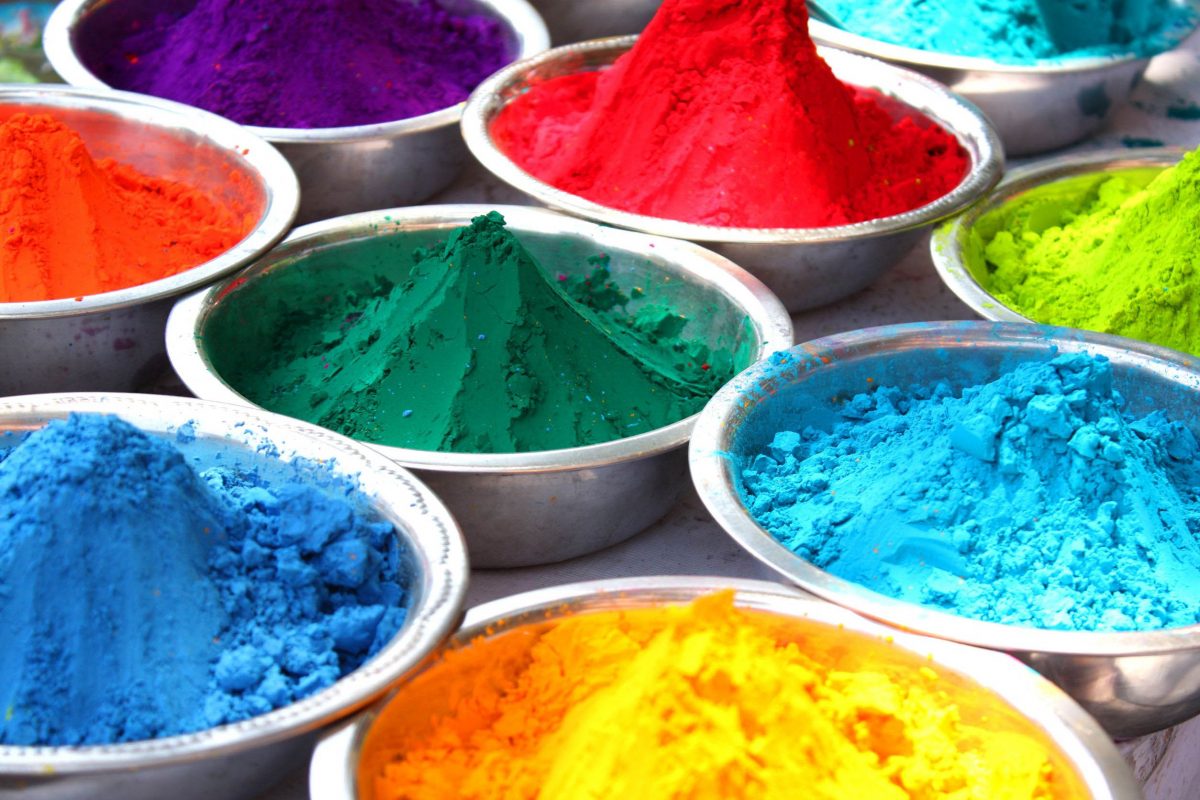Holi: Spring Festival of Colours 
May there always be spring in our eyes
and fingers, feet: pink ixoras, red hibiscus
mauve madar—green buds everywhere
Even live oaks’ allergenic dust coating everything
yellow, golden gainda, daddy said, not marigolds
pani re pani tera rang kaisa—is it rain—or
Water what is your colour? Or plucked strings
Mukesh mixing easily with jhaals chiming
from UP: Holi Khele Raghuvira Awadh Mein
May we sing for a thousand years—more—
chowtals, olaras—Mamas crafting coconut gojias
dholaks in arteries, hearts, ancestry’s souls season
-Sasenarine Persaud
Spring, Toronto
Vasant:
Indian spring devolving down centuries
into Phagun.
Holika went down in flames
and Prahalad, boy realised,
showing wisdom is not the preserve of age
joined the fray
of colour and fragrance!
Rigged over the Kaalaa Pani
so the British Raj
could sweeten European teas
(often Indian teas in European pots)
Indian spring followed
in Phagwah and quite unintentionally
this festival of colours brightened
unaccustomed but soon accepting
Eyes.
One hundred and fifty years to move
North — again —
This Canadian spring unimaginable
to tropical eyes:
A hundred shades of green
grass running up discoloured blades,
shoots afire in Holi-laughing eyes,
a hundred hues of red, yellow, dye
exploding in again-born sky
again-born eyes!
I understand
in the spring-of-a-twig time
all of one hundred fifty years.
Ah, my Hebrew friends
two thousand is more than I
can take to make my state
believable.
Yet if another one hundred fifty years
must pass
What difference does it make?
Vasant:
The Vedic spring
This Indian spring
Blossoms again in Vedic lands
-Sasenarine Persaud
Oblation
Nani’s cottage faced the canefield where the breeze blew freely, ruffling the cane sheaves and rippling the red triangular flag at her gate. By the time June reached the gate, the red of the flag seemed to match the heat of the fever in her body and thoughts.
In Nani’s arms her tears dried and her tension eased. Nani rocked her like a baby, muttering on in Hindi, commenting in English occasionally: “Fever, Muluk gat fever”.
Nani took her to the bedroom and laid her on the coconut sacking there. There was a bedi in the corner of the room, facing east, and a picture of Ram and Sita on the wall. She laid her on her stomach and massaged her, then on her back and massaged her again, praying in Hindi all the while ‘Aum bam ari astu. Aum . . .’ June remembered this prayer. It was for havan. It meant, ‘Let my tongue speak, ears hear, nose inhale, eyes see, arms and thighs be strong, let all the limbs be strong.’ As she prayed, Nani touched each part of the body the prayer referred to. . . then she went to the bedi, took the camphor, lit it, and began to recite the mantra for the ritual. June listened to the words, remembering their meaning now: These three worlds are as vast as the sky and they are to be regarded as mother earth. I ignite the fire on this altar on this earth. Nani fanned the fire with her hand while she recited this mantra. She said the next mantra then threw three pieces of Bel wood, one by one, into the fire, after dipping them in ghee. She said a mantra for each piece of Bel wood: O fire, accept this piece of wood, light it and bless us and give us children, livestock, holiness and food. Next she made an offering of ghee and sprinkled water on each side of the bedi after she spoke the mantra: Let the gods of speech purify our words . . . let the sun grace this sacrifice, its worshippers, let the gods grace us, let the gods of speech sanctify our tongue.
The burning wood, ghee and camphor were meant to have healing powers, to purify the atmosphere, like the incense at the Anglican church – it was no different. The scents filled the room and the memory of her quarrel with Lucile vanished. Nani’s prayers lulled her to sleep.
-Jan Shinebourne from The Last English Plantation
Last Friday the Caribbean celebrated one of its great annual festivals – the religious Hindu festival of Phagwah, also known as Holi. It is a worldwide celebration with origins in India and marked each year according to the Hindu calendar. In the Caribbean it is observed as an event sacred to Hinduism, but has also transcended religion and has become a cultural, traditional, folk, and popular festival. It is one of Guyana’s national festivals, recognised as a public holiday.

